
Upland Game Birds
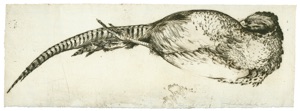
Ringnecks I & II
etching with drypoint, aprox. 7" × 19" and 7" x 22" on Arches Cover Buff, edition of 50.
175.00 each or 250 for the couplet
The tradition of sporting still-lives addresses both the beautiful as well as melancholic aspects of the dead bird in hand. These are mementa mori—reminders of mortality. Though the birds may be elegantly composed and beautiful drawn, they are also reminders that we live and eat at the expense of another.

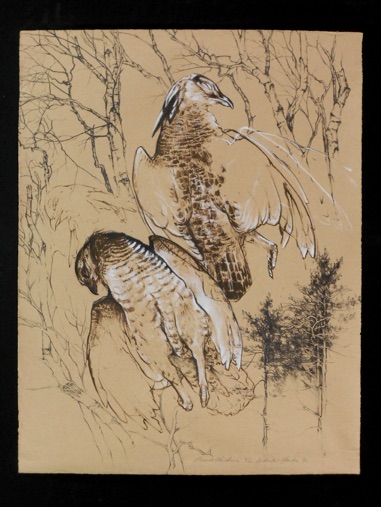
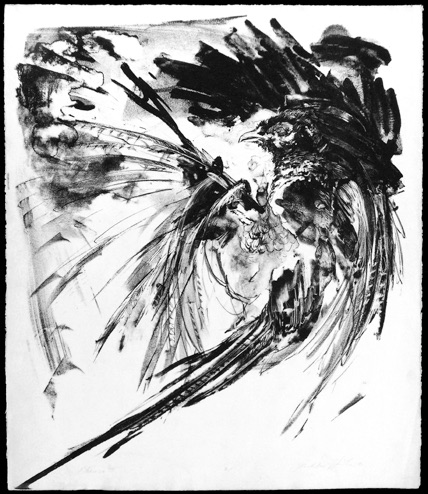
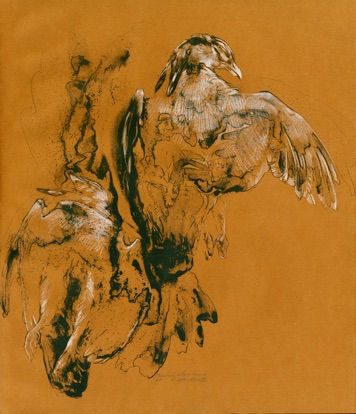
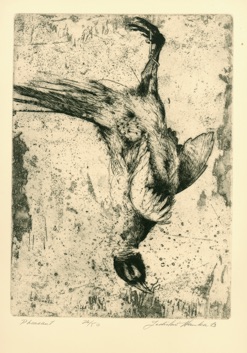
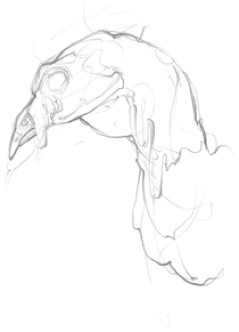
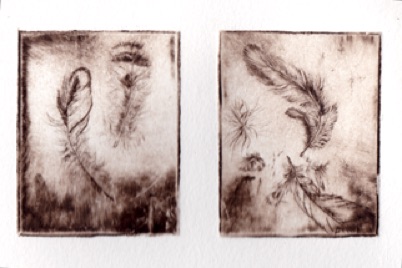
Prairie Chickens
lithograph, 1987 on 18" × 24" Canson, edition of 22 printed by Jonathan Clemens
800.00
Prairie Chickens
lithograph, 1987 on 19" × 27" Dresden Ingres, edition of 22 printed by Jonathan Clemens
300.00
This native grassland grouse is generally not doing well. I saw 15% of Michigan’s population on the booming grounds one morning, a scant three years before they went extinct. These however were drawn from Kansas birds where some western counties have strong populations that are legally hunted. They are printed lithographically with second growth birch and some young white pines, now protected from wild-fires, symbolically filling in the prairie remnants that are their last refugia.
Pheasant
etching with drypoint, 1983 10" × 13.5" image on Arches Cover Buff, edition of 50. 150.00
There is a long European tradition of sporting scenes and still lives that is primarily a celebration of privilege but also a reminder of one’s mortality amid plenty. It was primarily a Baroque tradition, a time thought of as the age of enlightenment, which generated great technical innovations as well inquisitions, plagues and horrific wars, commemorated with ossuaries— chapels decorated in tens of thousands of human bones. The bird is dead and hanging to age the meat. The composition is as static as the bird is dead.
Turkey head - Pencil sketch
The Temptations of S. Hubert
Etching with aquatint and drypoint, 1986 18" × 24" image on Lana Gravure, edition of 20
several impression remain at 500.00 each
In European painting there is a tradition of portraying the temptations of the desert fathers, especially St. Anthony. It is a device which allows an artist great freedom in playing with imaginative demons and evil tempters, which are always more fun than saints. For me the temptations are those of the hunter for whom the piles of dead game represent work and the seduction is of course, to just keep killing. St. Hubertus, the patron saint of hunters, looks forward to his next kill, tantalizing as the Holy Gail in the offing. The only dull and uninteresting element in the etching is predictably, the saint himself.
Pheasant
stone lithograph, 1980 on 22" × 30" Rives BFK, edition of 15. several impressions left at 750.00 each
The pheasant is more abstract and the image drawn on a lithographic limestone stone of several hundred pounds. There is a wonderful absurdity in the ponderousness of this process, which I’ve used to explore a sense of lightness, in no way denying the death of the creature portrayed, but exploring flight with feathers and movement originating from a central core source from which all movement comes.

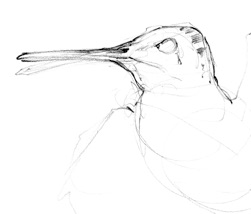
quail sketches
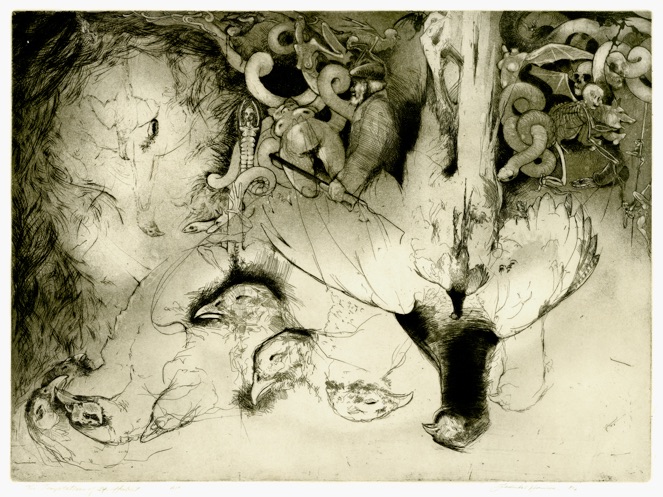
woodcock
Pheasant Feathers
drypoint- and a bang up exposition of what a nice drypoint will do for feathers and then a nice viscous varnish to keep the plate tone fully intact.
extremely variable impressions for 150.00 each
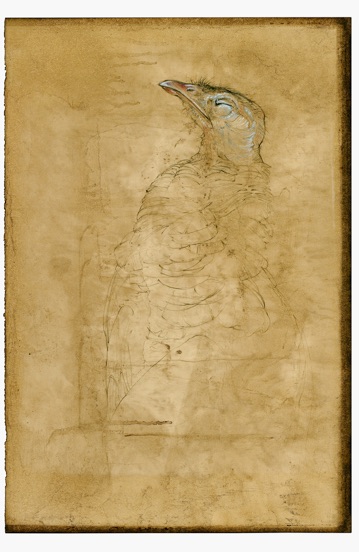
Dead Turkey Study
Colored pencils on Asphaltum-stained paper
Here I find the ancient reptilian aspect of a bird comes through unbuffered by soft feathers as the head structures no longer seem so cute or warm-looking as though eons of evolution had bypassed us unnoticed. Something pterodactyl-like in this otherwise familiar bird of mixed woodlands .
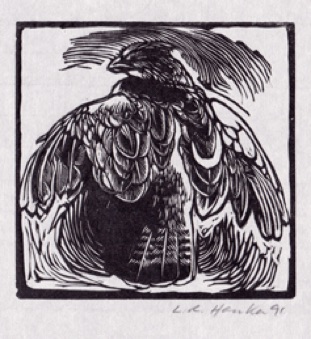
Grouse- wood engraving 100.00 each
cut for an invitation by Wally Dabrowsky sent out to colleagues for a weekend of Grouse hunting & drinking in the UP